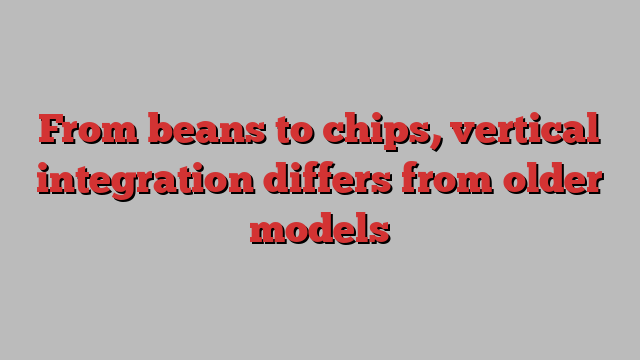
Unlock the Editor’s Digest for free
Roula Khalaf, Editor of the FT, selects her favourite stories in this weekly newsletter.
Does Starbucks want its own beans, as well as baristas? The chain, which has owned one Costa Rican coffee farm since 2013, is getting more into the growing business, purchasing farms in Guatemala and Costa Rica and investing in other “coffee belt” regions in Africa and Asia.
Vertical integration, especially into raw materials, has enjoyed bouts of popularity for at least a century. Car titan Henry Ford, an early proponent, even owned sheep farms to supply the wool for car seat covers. The baristas, however, are unlikely to serve up a true revival.
Globalisation and free trade unpicked the fashion to weave together suppliers with producers. Failures have been frequent and dismantling is costly and messy. Bowmar, possibly the biggest calculator maker in the world in the industry’s early 1970s heyday, bought into a plant to make its own integrated circuits as prices for its devices fell — and collapsed a year later. Chemicals group DuPont, partially playing white knight, acquired Conoco for its steady supply of feedstock in 1979 but the two parted ways a couple of decades later.
In certain sectors, geopolitics may be creating a modern variant. In chips, the advent of the “fabless” chip company, and the huge cost of semiconductor plants had dented tech’s appetite to own their own supply. But Chinese tech conglomerate Alibaba and its peers began forging into developing advanced chips as US-China tensions prompted a US crackdown on semiconductor exports.
Meanwhile, technical demands are prompting big companies to take design (if not manufacturing) back in-house. Apple began ditching Intel chips in favour of homegrown in 2020. “Integrating hardware and software is fundamental to everything we do,” said boss Tim Cook at the time. The advent of generative AI has prompted Meta and Google to push further into custom silicon, based in the latter’s case on Arm CPUs.
Investor tolerance for vertical integration varies with the times — but this type of control isn’t the Ford-variant of old. The same is true at Starbucks: its farms are small beans for a 38,000-plus store chain which buys some 3 per cent of global coffee supply. The holdings allow Starbucks to experiment, while ticking useful boxes around responsible agriculture and farmer empowerment.
Similarly Ingka Group, the biggest Ikea franchisee, boasts a portfolio of 320,000-plus hectares — think four New York Cities — of forest across seven countries. Again, this is about reforestation, not integration: just 5 per cent or so of harvested wood goes back into Ikea products, and via the open market.
That is for the best. Farming — whether sheep, beans or trees — is a very different business to retailing, whether flat-pack furniture or a caffeine fix.